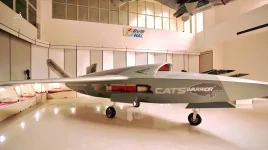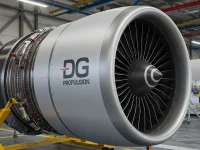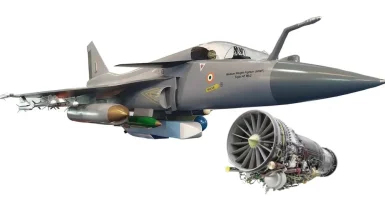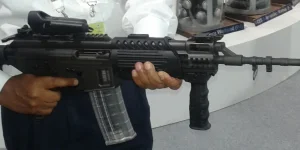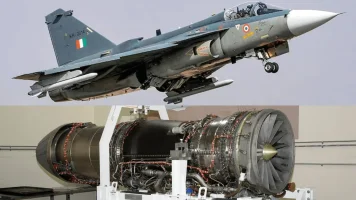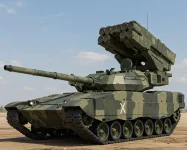- Views: 4K
- Replies: 10
Hindustan Aeronautics Limited (HAL) has marked a significant step forward in India’s indigenous military aviation programme, with the ninth Tejas Mk1A fighter jet, bearing the tail number LA-5041, now ready for delivery.
This milestone keeps the state-owned manufacturer on track to supply a total of 12 advanced jets to the Indian Air Force (IAF) by the end of 2025, enabling the formation of the first dedicated squadron of this 4.5-generation aircraft.
The production push is a key component of the nation's strategic effort to enhance its air defence capabilities and promote self-reliance under the Atmanirbhar Bharat initiative.
The company anticipates having a total of ten Tejas Mk1A jets completed by the end of this month (July 2025), demonstrating an accelerated production rhythm. Following LA-5041, three additional aircraft (LA-5042, LA-5043, and LA-5044) are in advanced stages of assembly at HAL's Nashik facility.
Developed by the Aeronautical Development Agency (ADA) and manufactured by HAL, the Tejas Mk1A is a substantially upgraded version of the Light Combat Aircraft (LCA). It is designed to replace the IAF's aging fleet of MiG-21 fighters.
The aircraft features superior avionics, including an Israeli ELTA EL/M-2052 Active Electronically Scanned Array (AESA) radar, a digital radar warning receiver, and an external self-protection jammer.
Its combat versatility is enhanced by its compatibility with advanced beyond-visual-range missiles like the indigenous Astra and the Israeli Derby, making it proficient in both air-to-air and air-to-ground missions.
The IAF, which currently operates with a squadron strength of around 31 against a sanctioned requirement of 42, views the Tejas Mk1A as critical to bridging this gap. The force signed a contract worth approximately ₹48,000 crore in February 2021 for 83 jets, which includes 73 single-seat fighters and 10 twin-seat trainers.
To further bolster its fleet, the Ministry of Defence issued a tender in April 2024 for an additional 97 aircraft, bringing the total planned induction to 180 Tejas Mk1A jets.
The first squadron is expected to be composed of 16 fighters and two trainers and may be stationed at Sulur Air Force Station or a forward airbase in the western sector.
To meet this rising demand, HAL has expanded its manufacturing infrastructure. The facility in Nashik, inaugurated in April 2023, functions as the third production line for the Tejas, complementing the two existing lines in Bengaluru.
This expansion has increased HAL's annual production capacity from 16 to 24 aircraft, with plans for a fourth line to further boost output to 32 jets per year by 2027.
This ramp-up has been aided by collaboration with private sector partners, such as VEM Technologies for the center fuselage and Larsen & Toubro (L&T) for the wings, alongside the adoption of modern techniques like robotic drilling to reduce assembly time.
Despite the progress, the programme has encountered significant challenges, most notably delays in the supply of F404-IN20 engines from General Electric (GE) Aerospace. These supply chain disruptions pushed the original delivery timeline from March 2024 into mid-2025.
The delay prompted public frustration from officials, with Air Chief Marshal AP Singh remarking at a 2025 industry summit that "technology delayed is technology denied," underscoring the urgency of the IAF's modernization needs.
To work around the issue, HAL has been using alternate engines for ground trials and initial tests to ensure the airframes are ready for the final certified engines upon their arrival.
Looking ahead, GE is expected to supply 12 of the F404-IN20 engines in 2025, with the supply rate increasing to 20 engines annually from 2026.
With the airframe and advanced electronic warfare systems now integrated, the Tejas Mk1A is scheduled to undergo critical firing trials of the Astra missile in August 2025.
In a major boost to indigenous content, HAL plans to equip the aircraft with the locally developed Uttam AESA radar starting from the 41st jet, which will increase the fighter's overall indigenous composition to over 70%.

